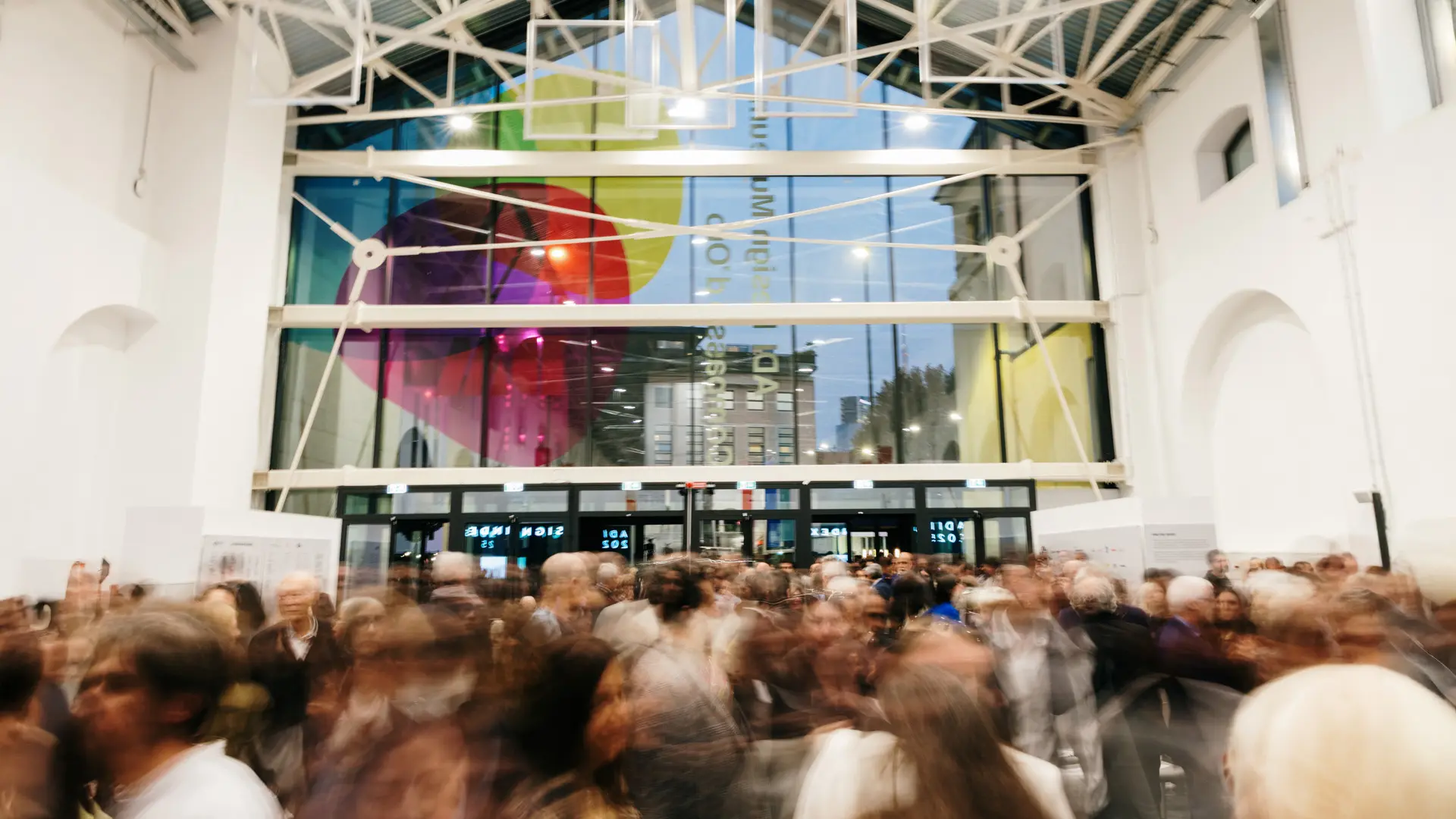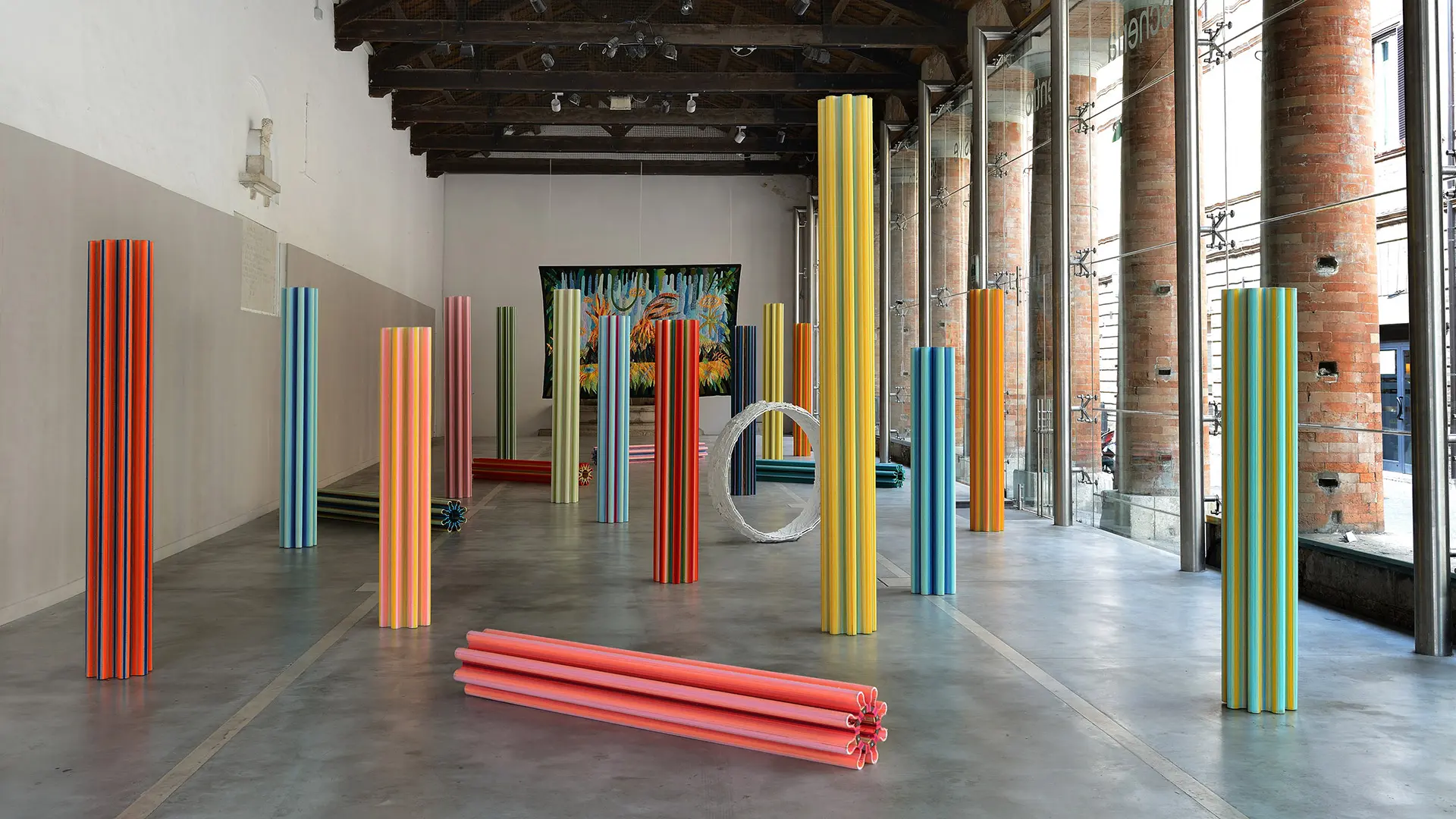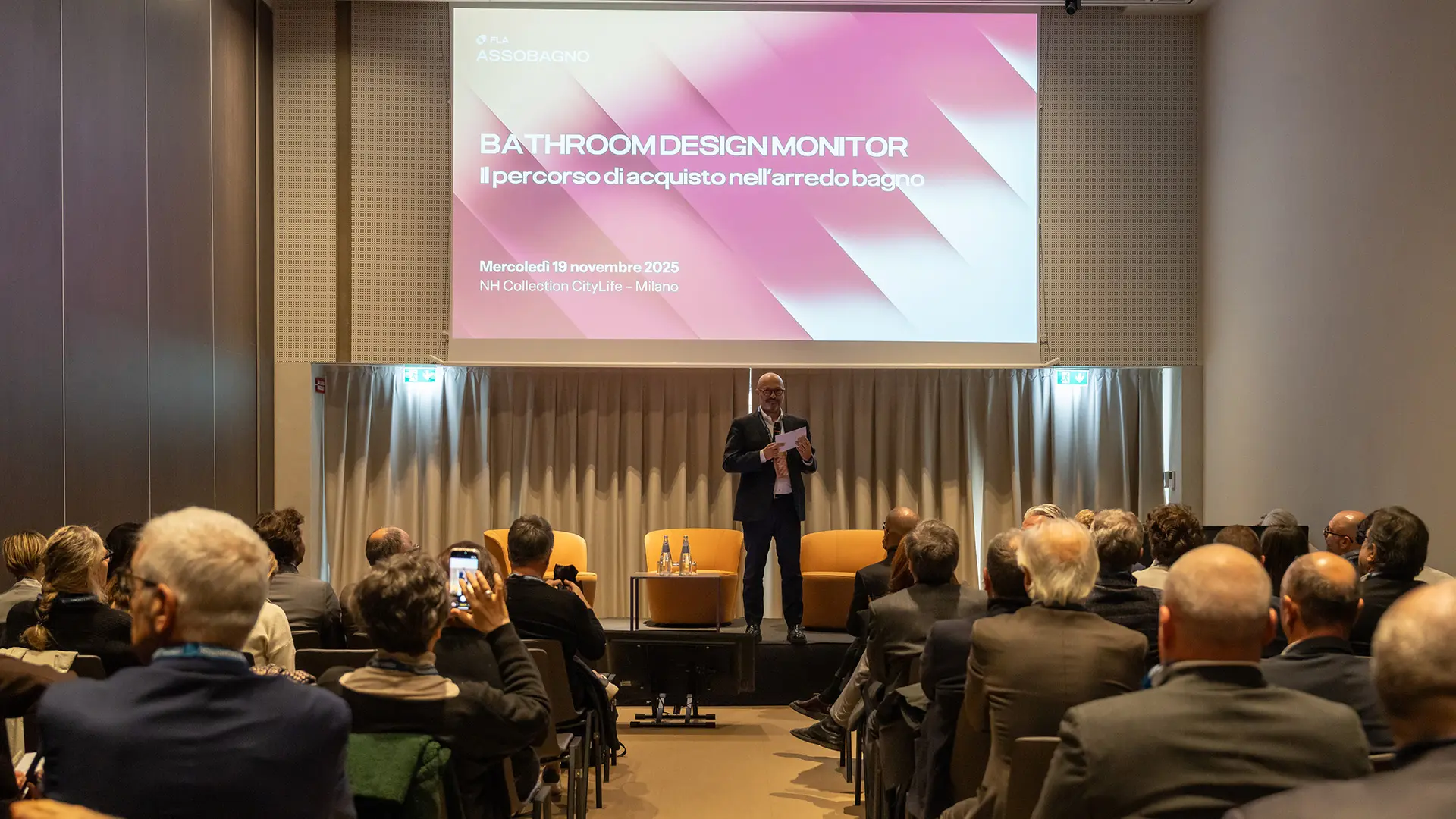They are all Italian and all in some way draw on the theme of memory. This is true even when they deal with current sporting events associated with the imminent inauguration of the Winter Olympics. There are ten of them and for the most part they are held in the most reserved cultural circuits, outside the mainstream. It’s even better when they’re out of town, bringing historic residences to life with gleams and flashes of good design

ADI Design Museum, Courtesy Associazione per il disegno industriale
Ahead of the Compasso d'Oro 2025, the ADI Design Index 2025 selection was presented at the ADI Design Museum. The selected projects, from various categories and disciplines, will be exhibited in Milan and, for the first time, in Agrigento, the Italian Capital of Culture 2025.
As is customary, the ADI Design Index 2025 selection was announced at the ADI Design Museum on Thursday 15th October, in the run-up to the ADI Compasso d'Oro Award 2025.
The projects identified by the Permanent Observatory, under the supervision of a committee composed of Makio Hasuike, Domenico Sturabotti, Laura Traldi and Francesco Zurlo, belong to different categories and disciplines: design for living, lighting design, workplace design, mobility design, personal design, food design, materials and technological systems design, service design, social design, communication design, business research, exhibition design, theoretical, historical, and critical research, and editorial projects. Alongside these, the famous Targa Giovani puts the spotlight on the upcoming generation of designers. The selection includes a total of 344 projects that testify to the quality, variety and creativity of the sector, split into a large number of categories.
"Over the 70-year history of the Compasso d'Oro Award, design has expanded its field of action into ever new territories, addressing the changes of a globalised and increasingly complex society. The Index Observatory offers a privileged point of view for professionals and the general public. But observing is not always synonymous with seeing: with the ADI Design Index 2025, we aim to provide a broader and more inclusive picture of Italian design, a tool for knowledge and perspective," said ADI President Luciano Galimberti.
Among the new features of this edition, ADI has established a Study Centre that collaborates with organisations such as Symbola, FederlegnoArredo and Confindustria. Divided into Association Departments - Designers, Companies, Distribution and Services, and General - it works with the Permanent Design Observatory to generate data and analysis. The aim is to evaluate projects on the basis of quality and to highlight the cultural, social and economic value of design. The Observatory is thus evolving into a centre for research into and strategic interpretation of Italian design: ADI is no longer just a selection platform for the Compasso d'Oro Award but a real hub capable of providing an overview of the state of Italian design and the challenges and opportunities the industry has to contend with.
ADI Design Index 2025 is taking shape through two exhibitions celebrating the culture of design and design. In Milan, at the ADI Design Museum, from 16th to 30th October 2025 and, for the first time, in Sicily: in Agrigento - the Italian Capital of Culture 2025 - the event will be held at the Palacongressi di Agrigento, from 12th to 28th November 2025.
The protagonists of this edition include companies capable of interpreting the present with a projection into the future. The 2024 Annual Report project, part of the Milan Design (Eco) System research conceived and promoted by the Salone del Mobile, has been selected in the Theoretical, Historical and Critical Research category. The Universo Satellite exhibition, held at the Triennale Milano in 2024, was accompanied by the publication of Universo Satellite (Corraini Edizioni), a 750-page encyclopaedic account documenting the twenty-five editions of SaloneSatellite.
Arper was selected for Catifa Carta, an evolution of the chair designed in 2001 by Lievore Altherr Molina studio and the company's first product to obtain environmental certification, available in the Papershell version. Array, designed by Snøhetta for MDF Italia, is a modular sofa that combines comfort, flexibility and sustainability. Modular and interconnected elements adapt to any space with versatile configurations and tailor-made solutions. Smeg's KSC01 digital scale, designed by deepdesign® studio, is designed for precise and intuitive everyday use. Designed by Francesco Lucchese Brooklyn for Falmec, Brooklyn is a retractable hood with a bridge structure that optimises space on kitchen islands and boasts integrated advanced functions.
Celestia, designed by Alessandro Stabile for Venedia, is a wire mesh outdoor armchair, ideal for bars and restaurants, with large volutes forming fluid and distinctive armrests. Cosmo, designed by Philippe Tabet for Et al., is a sofa system designed to respond to the needs of fluid home, work and leisure living. Criosfera, designed by Giulia Foscari – UNA / UNLESS for Artemide, is a lighting module inspired by ice cores, a symbol of climate change and a manifesto for the importance of Antarctica and environmental policies. Decumano, designed by Giulio Iacchetti and Matteo Ragni for Fantoni, is a series of glass tables that can be configured as architectural elements for executive offices, lounges and homes. Elica was selected for Element, designed by Fabrizio Crisà: a minimalist hood that combines glass and black steel with white backlit touch controls. Flip, designed by the BrogliatoTraverso design Studio for infiniti, is a minimalist stool with a tubular steel frame. Foggy from Vanità & Casa, designed by Studio Adolini, is a collection of mirrors with lighting that creates a soft effect. The H.H.H. HER HIGHEST HIGHNESS chair, designed by Philippe Starck for Kartell, is made from recycled material, characterised by its bold and elegant graphic design. Kartell was also selected for Teresa, a pendant lamp with fluid shapes, designed by Ferruccio Laviani. Quadro has been selected with the Super bathroom collection designed by Studio Associato Calvi Brambilla Architetti, and with Giacomo Moor's Thumb mixing group.
Habitus, designed by Andrea Anastasio for Foscarini, is a creative research project by Arun Jothi and Natalie Frost that encompasses the worlds of haute couture and embroidery. Foscarini was also nominated for Pli, a tube with LED strips into which a thin perforated sheet has been inserted along the entire length of the product, designed by Felicia Arvid. Finally, the company was selected for the monograph, designed by Artemio Croatto – Designwork, celebrating the company's first forty years. Mara has been selected with the Elle project, a bookcase designed by Ferruccio Laviani.
Helgoland, designed by Carlotta de Bevilacqua for Artemide, is a hexagonal honeycomb lighting system with miniaturised refractive optics that maximise light flux density. Ice, designed by Marc Sadler for Treesse, is a mini pool with a tempered glass infinity edge and a striking appearance. In-Side by Magis, designed by the Heatherwick Studio, is an outdoor collection that combines innovation, technology, experimentation and creativity. Designed by Vantot for Luceplan, Liiu is a modular and customisable system of pendant lamps. The Lipstich handle, designed by Matteo Piano and Renzo Piano for Olivari, stands out for its essential design and expressive power. Mindfull from Natuzzi, designed by the Natuzzi Design Centre, integrates technologies capable of generating personalised comfort. Nastro by Riva1920, designed by CarlesiTonelli, is a table with a solid wood top made of glued strips. Natura, designed by Makio Hasuike & Co for Aran World, is a kitchen inspired by light, air and natural materials. Nefelibata, designed by Stormo Studio for Adrenalina, is a sofa composed of just three modular elements.
Nia, designed by Leonardo Talarico for Dieffebi, is a seating system for meeting and sharing spaces. Minotti was nominated for Nico, designed by Hannes Peer Architecture, a table whose stylistic feature is the shaped element that supports it. Orbit, designed by Marco Cattaneo for Mogg, is a floor-ceiling lamp with diffused light. Origata, designed by Nao Tamura for Porro, is a collection inspired by the Japanese aesthetic tradition, consisting of a bench and a console table. De Castelli was selected for Ornamentum, a research project that explores the decorative potential of metal through the technique of erosion. Over, designed by ruga.perissinotto for Arbi Arredobagno, is a compact furniture system for small spaces. Antrax IT has been selected with Lana, a radiator designed by AMDL CIRCLE.
Philía by Odo Fioravanti for Pedrali is an outdoor seating collection inspired by the rational shapes of 1960s Italian chairs. Desalto was nominated for Rebus by Francesco Rota, a modular system consisting of small freestanding bookcases and storage units. Ribbon by Davide Groppi, designed by Maurici Ginés – Artec Studio, is a lamp that can emit light on one side while the other, remaining off, constitutes a sculptural object. Rificolina, designed by e-ggs for Miniforms, is an adjustable pendant lamp, the distinctive feature of which is its polyethylene lampshade. Designed by Matteo Thun and Benedetto Fasciana for Florim, Sensiterre is a surface that reinterprets the world of clay. Caimi Brevetti was selected for Shopper, designed by Stefano Barzaghi – Interno 20, a sound-absorbing pouf in the shape of a maxi bag. Sipario, designed by Gupica for Fiam Italia, is an indoor pendant lamp composed of two 6 mm glass panels. Superwire by Flos, designed by the Formafantasma duo, is a family of modular lamps that revisits traditional lanterns in a contemporary key. Technogym was nominated for Technogym Checkup, an artificial intelligence-based body assessment unit. Slamp has been selected for Nuvem Outdoor, an outdoor lighting system designed by Miguel Arruda – Arquitectos Associados.
Designed by Francesco Lucchese for Fantini Rubinetti, Torino is a bathroom or kitchen object that interprets the power of primary geometries. Twain, designed by Konstantin Grcic for Magis, is inspired by the classic Safari Chair but reimagined in a contemporary key. Two by Laminam is an ultra-thin ceramic surface a mere two millimetres thick. Designed by Palomba Serafini Associati for Talenti, Venice is a modular sofa whose design aims to convey a sense of lightness. Virgola, designed by Mimesi 62 for Design Luce, is a luminous handrail characterised by curved shapes. The WOD Space Divider by Lapalma, designed by Raffaella Mangiarotti, consists of a wooden or felt partition module. The Poltronova Study Centre for Design was selected for Hyper Poltronova, a radical installation inspired by the 1972 exhibition L'Invenzione della Superficie Neutra (The Invention of the Neutral Surface). ITAM has been selected for Innovis, designed by Giuseppe Modeo – CETMA European Research Centre for Design and Materials Technologies.


 Salone Selection
Salone Selection















